The global VHF air-ground communication stations market was valued at $1.1 billion in 2021, and is projected to reach $2.2 billion by 2031, growing at a CAGR of 7.2% from 2022 to 2031.
The VHF air ground communication station market is majorly associated with communication operations of aviation industry on commercial and military front. It can be termed as ground based fixed or remote two-way aircraft to ground communication station that operates on a very high frequency (VHF). The VHF Airband frequencies are between 108MHz to 137MHz. These frequencies are often reserved for communication and navigational aids for an aircraft such as VOR beacons, and precision approach systems.

Growth of VHF air ground communication station market is driven by factors such as increase in investment to support brown filed and green field airport operations, rise in passenger traffic across the globe, and adoption of new technologies supporting automation and division of VHF frequencies into several sub channels, allowing communication station to cater to more air traffic. The COVID-19 is having a notable impact on the market and have shifted the business dynamics within the forecast timeframe. The regulatory framework will also play a major role in defining business opportunities within the VHF air ground communication station industry. Operation on VHF frequencies without license of operations is illegal across several nations. Also, division of VHF frequencies into several airbands is also regulated by global and regional bodies. Such regulations directly impact business opportunities within the market.
The VHF air ground communication station market is segmented on the basis of airport class, type, application, airport category, and region. By airport class, it is divided into class A, class B, class C, and class D airport. On the basis of type, the market is fragmented by fixed and portable. Based on application, it is segregated into commercial and military. By airport category, the market is divided into commercial service airports, cargo service airports, reliever airports, and general aviation airports. By region, the market is categorized by North America, Europe, Asia-Pacific, and LAMEA.
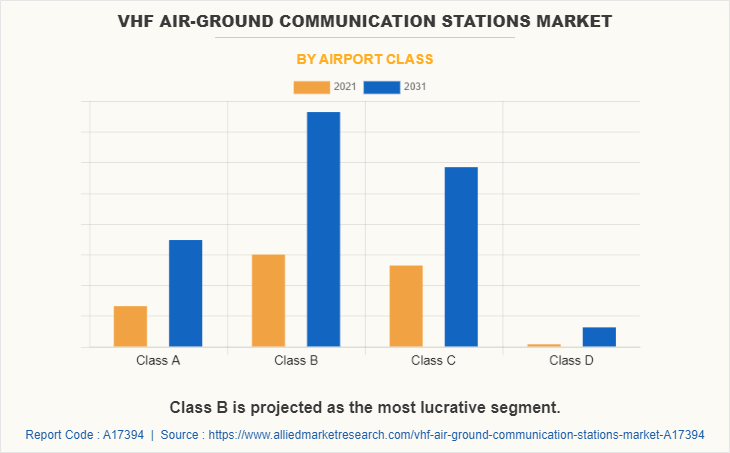
Companies have adopted product development and product launch as their key development strategies in the VHF air ground communication station industry. Moreover, collaborations and acquisitions are expected to enable leading players to enhance their product portfolios and expand into different regions. The key players operating in the VHF air ground communication station market are The key players operating in the market are Raytheon Technologies Corporation, Viasat, Inc., Becker Avionics, Inc., Rohde & Schwarz, Thales, Honeywell International Inc., Northrop Grumman Corporation, Jotron, MORCOM International, Inc., AEROTHAI Business, Systems Interface Limited, Leonardo S.p.A., Teledyne Technologies Incorporated, IACIT, CommSystems Ltd, and Elbit Systems.
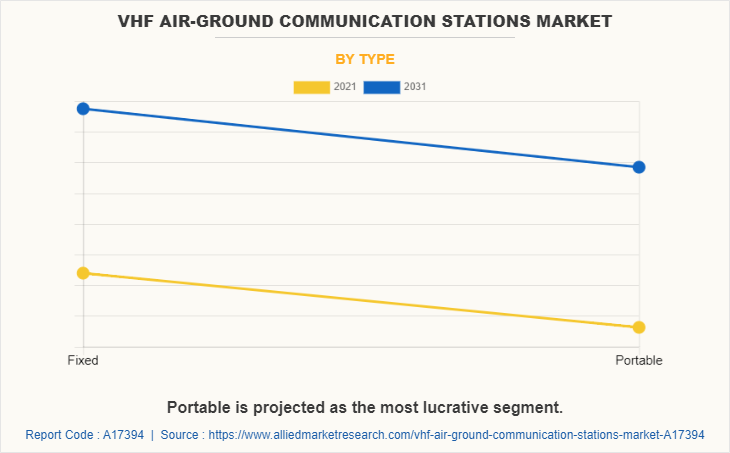
Adoption of total airport management (TAM)
The success of individual stakeholders is anticipated to determine the direction of aviation industry in the future. All agents, from air traffic control, air ground communication network, landing, taxing and takeoff operation, followed by effective turnaround time is to be placed into a unified platform, enabling real-time analysis to assist decision-making. By connecting processes and systems across the airport, total airport management (TAM) promotes data-driven decision making, comprehensive KPI management, and the integration of operations. TAM includes performance-based airport operations that permit the development, adoption, and upkeep of the Airport Operational Plan (AOP) on the basis of performance. This ensures fairness and the resolution of potential conflicts of interest between stakeholders and makes sure that everyone is putting forth their best effort in the direction of a common objective.
Rise in air-traffic, surpassing pre-COVID levels
The rise in aviation traffic is attributed to a variety of factors. The primary reason is population and economic expansion, which is being fueled by the burgeoning middle class. By 2035, the global economy is projected to increase by 3% annually, while aviation traffic is projected to grow by an average of 6% annually. The second development element is introducing low-cost airlines with competitive rates on well-travelled routes. The low-cost carriers play a significant role in the intensification of air traffic in Europe; at present, they account for more than 40% of Europe's and 25% of traffic globally. By encouraging international airlines to lower ticket rates, these businesses significantly influence airline prices.
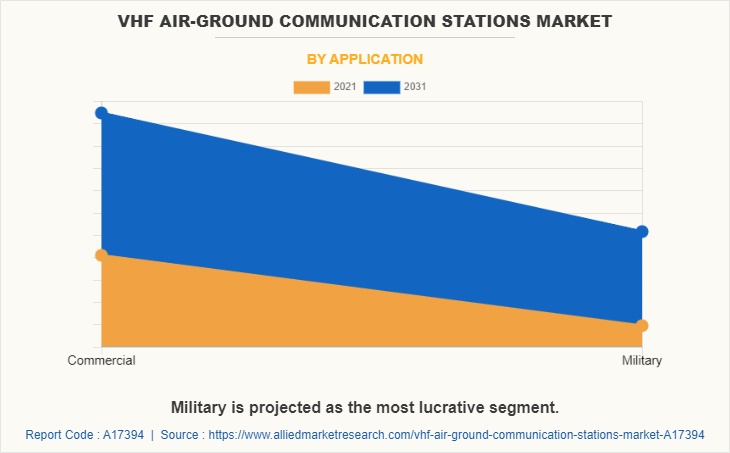
Increasing threat of cybersecurity and data breach
The entire safe operation of the airport environment and passenger safety depend on airport security. Despite having multi-layered security systems for passport checks and luggage scans, many airports are becoming targets of cyber-attacks. Such assaults have occurred in the travel business, most especially in the airline industry. According to IATA, hacks cost the world economy $460 billion annually. In the next three years, cybersecurity is anticipated to account for a sizable chunk of the over $33 billion in IT spending anticipated for airlines and airports.
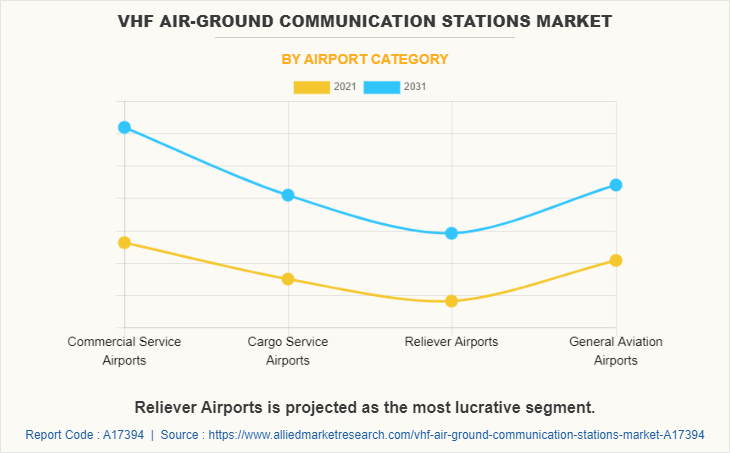
Division of frequencies, allowing more band for communication
The existing range of radio frequencies that may be used by businesses and the government is constrained by physics and global laws. Even with the weak Wi-Fi transmissions and limited bandwidths used by most aircraft, performance and aerodynamics may be affected by modifications like antennas. Utilizing mobile devices excessively while flying might saturate already-fragile communications and interfere with radio signals on current equipment caused by new high frequencies.
The need for public-use, commercial wireless services and governmental services is growing significantly over time despite these limitations. A 4G LTE concept that uses millimeter waves to affordably broadcast signals over the air and supports complete air-to-ground networks streaming at up to 75 Mb/s is one solution that has been suggested for fixing the problem. However, this technology has certain limitation such as decreased frequency separation between users provide unpredictable effects and provide interference by digital pockets, ramping up miscommunication.
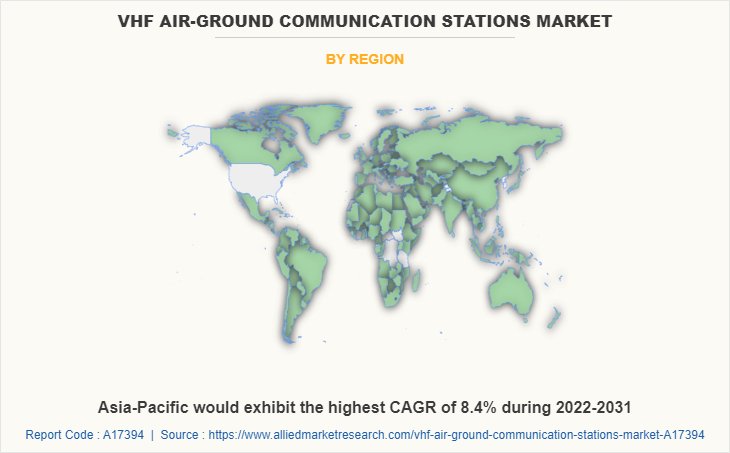
Key Benefits For Stakeholders
- This report provides a quantitative analysis of the market segments, current trends, estimations, and dynamics of the VHF air-ground communication stations market analysis from 2021 to 2031 to identify the prevailing VHF air-ground communication stations market opportunities.
- The market research is offered along with information related to key drivers, restraints, and opportunities.
- Porter's five forces analysis highlights the potency of buyers and suppliers to enable stakeholders make profit-oriented business decisions and strengthen their supplier-buyer network.
- In-depth analysis of the VHF air-ground communication stations market segmentation assists to determine the prevailing market opportunities.
- Major countries in each region are mapped according to their revenue contribution to the global market.
- Market player positioning facilitates benchmarking and provides a clear understanding of the present position of the market players.
- The report includes the analysis of the regional as well as global VHF air-ground communication stations market trends, key players, market segments, application areas, and market growth strategies.
VHF Air-Ground Communication Stations Market Report Highlights
| Aspects | Details |
| Market Size By 2031 | USD 2.2 billion |
| Growth Rate | CAGR of 7.2% |
| Forecast period | 2021 - 2031 |
| Report Pages | 319 |
| By Airport Class |
|
| By Type |
|
| By Application |
|
| By Airport Category |
|
| By Region |
|
| Key Market Players | Elbit Systems, Viasat, Inc., CommSystems Ltd, IACIT, Northrop Grumman Corporation, Teledyne Technologies Incorporated, Raytheon Technologies Corporation, Becker Avionics, Inc., Honeywell International Inc, Spectra Group, Systems Interface Limited, Thales, AEROTHAI Business, Rohde & Schwarz, MORCOM International, Inc., Jotron, Leonardo S.p.A. |
Analyst Review
The VHF air ground communication stations market is expected to witness significant growth in coming years. Adoption of total airport management (TAM)-elevating demand of comprehensive communication network, change in consumer dynamics, privatization of airports, arrival of electric vertical takeoff & landing vehicles (eVTOL), and air taxi are anticipated to support business potential within the VHF air ground communication stations market during the forecast period. Aggressive initiatives by federal organizations such as FAA and Euro control to standardize protocol and establish globally accepted policies to support global growth. As of June 2022, 45,000 flights were handled by FAA per day, with 520 airport traffic control towers, 147 terminal radar approach control facilities, and more than 14,000 air traffic controllers.
Industry leaders within the aviation industry are anticipated to be investing heavily in research and development to achieve carbon neutrality. Inclination of regional agencies such as IATA to achieve zero carbon emission by 2050 is enforcing business players to introduce more optimized solutions. In line with such initiatives, companies are developing comprehensive communication stations and adoption global standards, allowing them to operate more effectively at global level and notably reduce aircraft taxing and turn-around time.
To fulfill the changing demand scenarios, market participants are concentrating on product launches to offer a diverse range of products and meet new business opportunities. In addition, market participants are continuously focusing on contracts and partnership efforts to match changing end-user requirements and improve the growth of the VHF air ground communication station market.
Among the analyzed regions, Asia-Pacific is the highest revenue contributor, followed by North America, Europe, and LAMEA. Asia-Pacific is expected to witness highest growth rate during the forecast period.
The global VHF air ground communication station Market was valued at $1,100.7 million in 2021, and is projected to reach $2,159.4 million by 2031, registering a CAGR of 7.2% from 2022 to 2031.
The key players operating in the market are Raytheon Technologies Corporation, Viasat, Inc., Becker Avionics, Inc., Rohde & Schwarz, Thales, Honeywell International Inc., Northrop Grumman Corporation, Jotron, MORCOM International, Inc., AEROTHAI Business, Systems Interface Limited, Leonardo S.p.A., Teledyne Technologies Incorporated, IACIT, CommSystems Ltd, and Elbit Systems.
Asia-Pacific is the largest regional market for VHF air-ground communication stations.
Usage of VHF air ground communication stations in commercial and military segments are among the major market application.
Factors such as increase in investment to support brown filed and green field airport operations, rise in passenger traffic across the globe, and adoption of new technologies supporting automation and division of VHF frequencies into several sub channels, allowing communication station to cater more air traffic are among the major market trends.
Loading Table Of Content...


